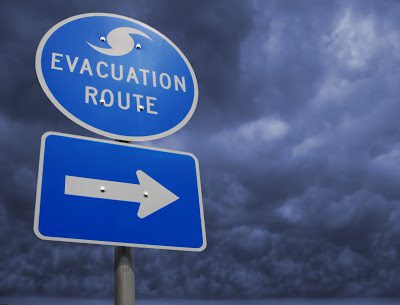Whether delivered or scenario-driven, disaster plans are essential knowledge for any workforce.
Laurie Barnett, director of corporate outreach and preparedness at Southwest Airlines, said though the company’s greatest focus of training is on hurricanes, its disaster plan can be used for other events such as snowstorms, tornadoes, floods and earthquakes. Airport personnel are trained at their respective airports to lead their locations in the event of an emergency. Of the 106 cities Southwest is based in, 46 are prone to hurricanes.
“In an airline business, we deal with irregular decisions every day,” Barnett said. “We’ve got snowstorms, issues with thunderstorms and whatever it might be that creates irregular operations.”
Much like airlines, hospitals are thrown quite a few curveballs on a daily basis.
Chris Kilroy, manager of emergency preparedness and security at Baptist Health South Florida, said the South Florida-based company has several levels of disaster preparedness training that it performs regularly and it pre-identifies large-scale events where it would have to receive more patients. Events such as hurricanes or tornadoes are prepared for, in addition to terrorist attacks.
“It starts with awareness-level training that we gear for everyone in the organization,” Kilroy said. “[It] familiarizes them with the fact that we have plans and that there are procedures in place and essentially that everyone has a role and if you don’t know what your role is, you should be speaking with a supervisor about that.”
The awareness training is a four-hour program administered via the company’s intranet. An eight-hour emergency hazardous materials course for hospital personnel is given as well. “We teach them how to use the personal protective equipment,” Kilroy said.
Barnett said Southwest personnel are trained on its disaster-response plan regularly but that when it comes to hurricanes, the training is annual. Personnel also have a disaster kit to use when needed. Meanwhile, leadership at Southwest’s Dallas-based headquarters is trained to support the field employees.
“We have plans, checklists and a communication plan here to support them,” Barnett said.
Typically, Southwest Airlines conducts in-person training with supervisors teaching employees, and each airport — or station — has its own ground operations training department.
“We’ll do things like mini-drills or table-top exercises to get them comfortable with the material because they don’t look at it every day,” Barnett said, adding that drills are mainly used for the event of an airplane crash. Classroom training is used for natural disasters.
“We like to give people scenarios and let them stand up before the class and tell how they would solve the problems; how they [would] use their resources to successfully deal with the situation,” Barnett said.
Barnett said employees are “empowered to make great judgments. We train them to do the right thing. We have equipped them to deal with irregular situations on an everyday basis.”
Baptist Health South Florida also conducts drills with its staff.
“More and more, we’re going toward bringing actual victims in and having [staff] practice whatever is needed for that scenario,” said Jean Arias, director of emergency preparedness and security. “With some of the drills, for instance, we shut down the telephone system and challenge our other methods of communications, to [ask ourselves] if we don’t have a computer system functioning at that moment and if our phones aren’t working, what are we going to do?”
In late May, Southwest had its training put to the test when the Dallas area had a tornado near the airport.
“Hurricanes you can plan for,” Barnett said. “They’re forecast. We’re getting better at seeing potential for tornadoes, but those catch you off guard.”
Employees received an alert and jumped into the emergency plan. Barnett thinks the employees did a great job. There were no customer injuries.
“Of course the one thing we can’t help is that the aircraft are sitting out there,” Barnett said. “We received some aircraft hail damage. We can repair that.”
Once a disaster has passed and plans have been executed, they’re revised and revisited.
“We do lessons-learned sessions after we’ve activated our plan for anything,” Barnett said, adding that employees are sometimes surveyed about the disaster plan.
Kilroy said though organizations tend to focus on preparations and response, emergency management is mostly about recovery.
“It’s really geared to getting back to normal business operations,” Kilroy said.
Natalie Morera is an associate editor at Chief Learning Officer magazine. She can be contacted at nmorera@CLOmedia.com.















